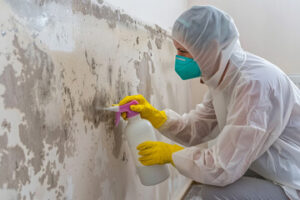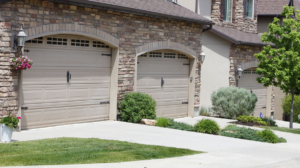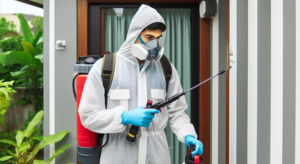Ace Mold loves wood—the cellulose content provides them with a rich food source. If left untreated, a minor wood infestation can become a serious health risk and lead to significant structural damage.

Luckily, there are simple, natural solutions that can stop mold growth at its core. Before you begin, remember to wear eye protection and a mask to prevent breathing in the spores.
Mold remediation involves a series of steps that include testing, removal and cleaning to prevent further contamination. This procedure may require removing porous building materials like drywall and carpeting as well as addressing the source of moisture. Professionals can help you understand the extent of the infestation and recommend steps for a safe, effective cleanup.
The first step in any mold remediation is to isolate the area and contain it to prevent the spread of spores. This is usually done by placing plastic sheeting over the affected areas. The next step is to disinfect the area using a bleach solution or a commercial antifungal agent. After the area has been cleaned, it is important to dry the surface quickly with fans and dehumidifiers to prevent regrowth. All contaminated materials should be removed and discarded in heavy-duty garbage bags to avoid the release of mold spores into the home environment.
Before starting any cleaning, it is important to use PPE (personal protective equipment) such as gloves, safety glasses and a N95 mask to prevent inhalation of mold spores. It is also a good idea to open windows and turn on fans to allow the air to circulate properly. Finally, it is important to bag up any used cleaning sponges or equipment and throw them away through a nearby exit as opposed to into the home as this can stir up spores and distribute them throughout the house.
In addition to disinfecting the area, it is also important to test the mold to ensure that all of the spores have been killed. This can be done by using a simple kit that includes a swab, a petri dish, gloves and a mask. The sample is then mailed to a lab for analysis. One of the most dangerous types of mold is Stachybotrys, commonly known as black mold. This is extremely toxic and should only be handled by a professional.
Once the mold has been tested and remediated, it is time to rebuild and restore. Non-porous surfaces that have been contaminated can be cleaned by washing them with a detergent and sanitizer or by treating them with an antifungal agent. Porous materials such as drywall and carpeting must be replaced due to their poor structural integrity.
Containment
Using containment procedures during mold remediation is essential for protecting building occupants and workers. It’s also vital for preventing cross-contamination of other areas of the home or commercial property.
A mold contamination specialist must assess the affected area and determine if it requires full or limited containment. The assessment considers the extent of mold growth, type of surfaces involved, and moisture sources and/or issues. Professionals must also establish an action plan that includes containment procedures.
Physical barriers are one common form of containment. These are created by enclosing the moldy area with materials like plywood or plastic sheeting. Professionals may also install airtight seals and close off HVAC systems to prevent the release of contaminants into other parts of the house. Negative air machines, or air scrubbers, are another important piece of containment equipment. These machines create negative air pressure inside the containment area, drawing in and filtering mold spores before they can be released into the rest of the home.
For small surface mold infestations, it is possible for homeowners to take on the cleanup themselves. The EPA recommends that anyone embarking on a DIY project should obtain the appropriate personal protective equipment, which includes a mask and gloves, and open windows to allow for proper ventilation. The EPA also advises against using bleach solutions on porous surfaces, as this can cause permanent damage.
Surface-level mold can often be removed with basic household cleaners and a bit of elbow grease. For example, a diluted solution of hydrogen peroxide or white vinegar can be used to dissolve and rinse away organic material. An old toothbrush or scrub brush can be useful for scrubbing tight corners and grout.
If the moldy surface is drywall or other porous material that will need to be removed, a mold remediation pro should be called in. It is also a good idea to call in a professional if the mold problem appears in areas of the home or commercial property that can’t be easily accessed, such as behind walls and insulation.
Mold can cause structural damage to homes and buildings if left unaddressed for long periods of time, especially if the mold/moisture problem involves a roof leak. Mold can also be a serious health concern for those with compromised immune systems or chronic respiratory conditions.
Cleaning
Cleaning procedures vary depending on the level of contamination and what type of mold it is. For example, if the mold is visible on the surface of a wall or ceiling, it can be cleaned using standard household cleaners like bleach and ammonia. However, if the mold is deeper in the surface or has spread to porous materials like carpet and drywall, it will require specialized cleaning products and techniques. This is why it’s important to consult a certified professional.
If the mold is on a nonporous material, such as a hard plastic, concrete or metal, it can be removed by scrubbing and washing with water and a mild detergent. If the mold is on porous surfaces like drywall or wood, it may be necessary to use antimicrobial cleaning products. These contain special chemicals that penetrate the surface of the material and remove hidden spores.
When choosing an antimicrobial product, be sure to read the label carefully and follow all safety precautions. It is also a good idea to test any cleaner or disinfectant on an inconspicuous area before applying it to a large area.
There are many natural and chemical products available that are designed to kill mold spores. One of our favorites is Benefect, which is formulated with thyme extract. This effective cleaner is available in a spray bottle and can be used to clean many different surfaces. However, it doesn’t address the stains that often accompany mold growth.
While cleaning, it’s a good idea to wear rubber gloves and eye protection to prevent inhalation of mold spores. It is also a good idea not to leave any paper towels, masks or other equipment behind, as they can collect and disperse the mold spores into other areas.
When the cleaning is complete, the affected area should be dehumidified and ventilated before applying any paint or sealer. It’s also a good idea to review the remediation plan and make any necessary adjustments. This will help ensure that any additional mold is not overlooked and that the proper steps are taken to stop future outbreaks.
Restoration
Mold cleanup and restoration procedures are a meticulous process that should be performed only by trained professionals. These experts will use protective gear and specialized equipment to physically remove all mold-infested materials and surfaces. Porous materials, such as drywall or insulation, may need to be removed and replaced, while non-porous surfaces like tiles, metals, and sinks can often be cleaned and restored. Once the affected areas are cleaned, they will be dried and dehumidified to prevent mold from returning.
Mold growth is accelerated by high humidity levels, so professional mold remediation teams will ensure that all affected areas are thoroughly dry before beginning clean-up. They will also control airborne spores, which can spread to other unaffected areas of the home or business. To do this, they will use industrial-grade dehumidifiers and fans to speed the drying process and lower the risk of mold spores spreading through the air.
Surfaces and materials that are contaminated with mold will be cleaned using antimicrobial agents and biocides to kill the mold spores and eliminate any hidden colonies. These products are specially formulated for cleaning and disinfecting and can be more effective than homemade cleaners or standard household chemicals. Moldy drywall and other porous materials are typically removed during this phase, along with contaminated carpeting and other porous items that cannot be cleaned or replaced.
After cleaning the affected area, professionals will treat it with a special sealant to protect it from future mold growth. This is particularly important if the area has been contaminated with black mold or other serious types of fungus that can be difficult to clean and remove completely.
Finally, the contaminated space will be tested to ensure that all visible signs of mold are gone. Then, the space can be reoccupied and normal life can resume. It is also important to keep in mind that just because the mold has been removed, there is no guarantee that it will never return if there are ongoing moisture problems.
Mold inspection, containment, remediation, and restoration can be a challenging and time-consuming task, but it is essential to your family’s health and well-being. Prolonged exposure to mold can cause a range of symptoms and health issues, including respiratory problems and allergic reactions.








